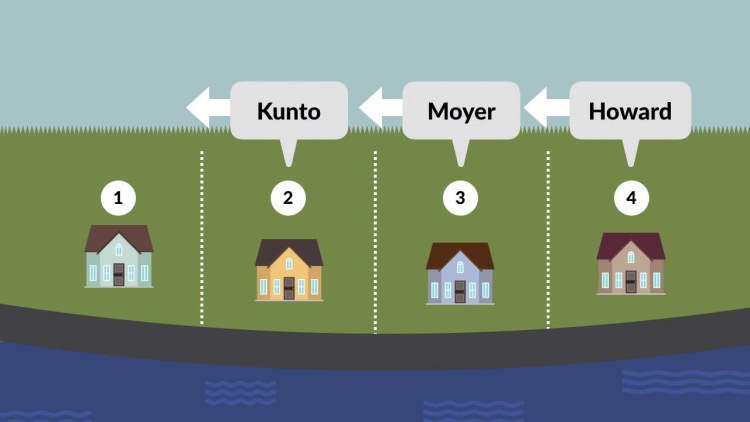Howard v. Kunto
Washington Court of Appeals
477 P.2d 210 (1970)
- Written by Dennis Chong, JD
Facts
In 1932, McCall had a house on some land. His record title erroneously described his tract to be the 50-foot tract immediately to the west of his. This erroneous deed passed several times over the years, including to Miller. Miller built a dock on the misdeeded property. In 1959, Miller conveyed the erroneous deed to Kunto (defendant), who took possession of the misdescribed plot of land. In 1960, Howard (plaintiff) ordered a survey of the area and discovered that he and several of his neighbors were occupying plots of land that were not the plots described in their respective deeds: Howard actually owned record title to the land occupied by Moyer, and Moyer owned record title to land occupied by Kunto. Howard and Moyer conveyed their record deeds to each other, which resulted in Howard holding record title to the land occupied by Kunto. Howard then brought suit to quiet title on the land occupied by Kunto (record owned by Howard) in Howard. Before this time, no one had ever challenged the ownership of the land that Kunto occupied. The trial court held that Kunto, having occupied the property for less than a year, had not satisfied the requirements for adverse possession, and thus the land belonged to Howard. Kunto appealed.
Rule of Law
Issue
Holding and Reasoning (Pearson, J.)
What to do next…
Here's why 899,000 law students have relied on our case briefs:
- Written by law professors and practitioners, not other law students. 47,000 briefs, keyed to 994 casebooks. Top-notch customer support.
- The right amount of information, includes the facts, issues, rule of law, holding and reasoning, and any concurrences and dissents.
- Access in your classes, works on your mobile and tablet. Massive library of related video lessons and high quality multiple-choice questions.
- Easy to use, uniform format for every case brief. Written in plain English, not in legalese. Our briefs summarize and simplify; they don’t just repeat the court’s language.





